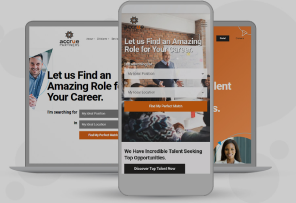All B2B purchases have to go through a decision-making process, whether that's an individual entrepreneur studying materials and crunching numbers, or an executive committee seeking board approval at an enterprise-level corporation.
While the buyer's journey may be wildly different from one business to another, there are some steps your company can take to support any decision-making process. These seven suggestions are likely to help you close more sales in any B2B context.
Offer concrete information in digestible formats
Don't make your buyers search for the information they need – it's likely that you'll lose their interest long before they find what they're looking for or give up altogether. The best way to make information easy to find is to shape it into multiple structures tailored to different situations.
For example, depending on what's appropriate for your product or service, you might offer similar information in any of these formats:
- Industry-specific white papers
- Quick-reference cards with facts and figures
- Downloadable brochures tailored to specific types of customers
- Website FAQ page
If your website has a search function, see if you can access past searches to learn what kind of information potential buyers tend to be looking for. Make sure they can find it easily.
Build relationships
When a potential customer signs up for your email list, what do they receive from you? Ideally, they're greeted with a well-planned series of emails that introduce your company, products, and services in a way that's tailored to their needs.
Once they're on the list, think about how you can keep them engaged with relevant information without flooding their inbox or overwhelming them with too much content. You might try alternating between long-form newsletters and short messages to see what works best.
Over time, they'll not only receive a lot of information from you that might influence their buying decision, but they'll start to consider you a reliable and trustworthy ally. That relationship will help a lot when it comes time for a buying decision.
Offer a thorough needs analysis
It's nearly always a mistake to launch into a sales presentation without gathering information first.
Instead, ask lots of questions and do a thorough needs analysis to learn about their challenges, needs, and priorities.
They'll appreciate the fact that you didn't simply try to sell them on something without first taking the time to understand who they are as an organization. That kind of attention is rare in any industry – it's another thing customers tend to notice right away.
When you listen carefully and understand your client's needs, you can avoid overwhelming them with details they don't need, and instead hone in on the details they need to make their decision.
Present tailored solutions
Using the information you gathered in the needs analysis, determine how your company can help.
Present these tailored solutions to the decision-makers in a way that's easy for them to understand and that shows you genuinely care about their business needs.
Make it clear why they should choose your product or service over any other options on the market. Offer them relevant supporting details and case studies to help them make their decision.
Put it in writing
Even if you present your solution in a live meeting or Zoom call, be sure to follow up with a written presentation. Putting the details on paper gives your potential clients a reference to look at — or share with others — during the decision-making process.
The written presentation should be brief and include all the information your clients need to make their decision. It's also a good opportunity for you to remind them of what they stand to gain by choosing your company over others in the field.
Follow up & be available
After you've sent a written presentation, make sure to follow up. People are busy, and won't always find time to reach out to you to discuss their questions or concerns. Put yourself in front of them and invite that discussion, and make sure they know you're happy to address a committee or any other group involved in the decision process.
It might take them some time before they're ready to move forward with a decision – but when they are, you want to be the first person on their mind.
Ask for the close
Don't forget to ask for the close. It's frustrating for potential buyers to be convinced and ready to buy, but find themselves wasting time in an endless discussion because they don't know what the next step is. Keep asking them if they're ready to sign the contract, start the free trial, order some samples, or whatever the next step is.
It's all about communication
Supporting a B2B buying decision is largely a function of providing the exact information the buyer needs in a format they find approachable and easy to use. Providing lots of information resources — including a tailor-made proposal that focuses on exactly the factors that influence their specific business decision — is the best way to do that. Making yourself available and approachable for questions, following up, and asking for the close are all steps that help your B2B customer make a solid decision about your solutions.



